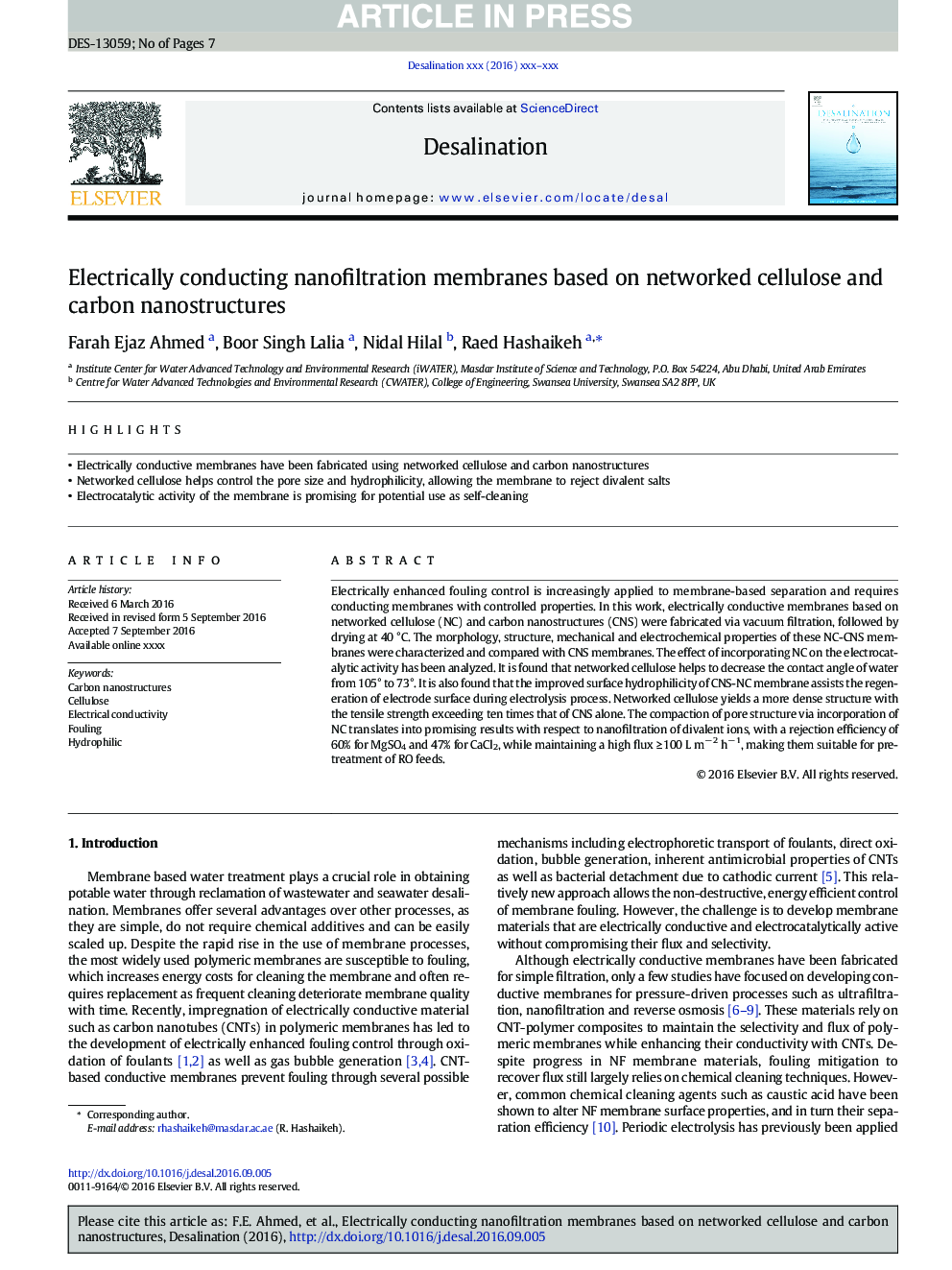| Article ID | Journal | Published Year | Pages | File Type |
|---|---|---|---|---|
| 4987980 | Desalination | 2017 | 7 Pages |
Abstract
Electrically enhanced fouling control is increasingly applied to membrane-based separation and requires conducting membranes with controlled properties. In this work, electrically conductive membranes based on networked cellulose (NC) and carbon nanostructures (CNS) were fabricated via vacuum filtration, followed by drying at 40 °C. The morphology, structure, mechanical and electrochemical properties of these NC-CNS membranes were characterized and compared with CNS membranes. The effect of incorporating NC on the electrocatalytic activity has been analyzed. It is found that networked cellulose helps to decrease the contact angle of water from 105° to 73°. It is also found that the improved surface hydrophilicity of CNS-NC membrane assists the regeneration of electrode surface during electrolysis process. Networked cellulose yields a more dense structure with the tensile strength exceeding ten times that of CNS alone. The compaction of pore structure via incorporation of NC translates into promising results with respect to nanofiltration of divalent ions, with a rejection efficiency of 60% for MgSO4 and 47% for CaCl2, while maintaining a high flux â¥Â 100 L mâ 2 hâ 1, making them suitable for pretreatment of RO feeds.
Related Topics
Physical Sciences and Engineering
Chemical Engineering
Filtration and Separation
Authors
Farah Ejaz Ahmed, Boor Singh Lalia, Nidal Hilal, Raed Hashaikeh,
